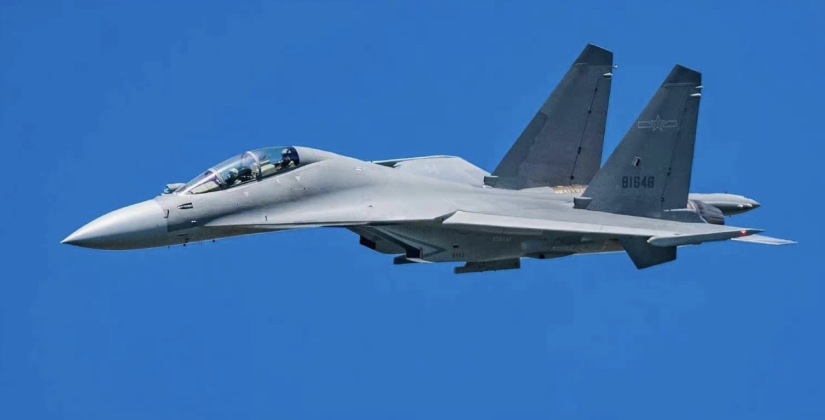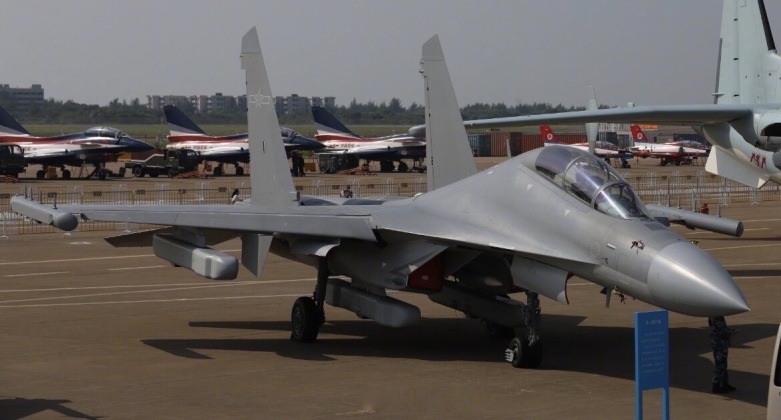Amid a number of new revelations at one of the most anticipated Chinese military events, the 2022 Zhuhai Air Show, one of the most notable which surfaced on November 5 has been the presence of a J-16 heavyweight fighter with construction number 1105. The aircraft, which appears to be fully operational with the Chinese People’s Liberation Army (PLA) Air Force, comes from the 11th production batch providing the first indication that part of this batch, and most likely all of it, has been completed. The J-16 is estimated to have first entered service around 2014-2015, and is a heavyweight twin engine fighter derived from the Soviet Flanker design – which was widely considered the world’s top air superiority fighter during the Cold War. Although a number of advanced Flanker derivatives have been developed abroad by Russia, and the sophisticated Su-30MKI was jointly developed by Russia and India, the J-16 alongside the carrier based J-15B are considered by far the most capable reflecting China’s primacy in key areas high tech, and its ability to apply this to improving its aircraft.

With J-16 batches numbering 24-30 fighters each, the production of at least 11 batches in service indicates a fleet size of approximately 300 fighters. This makes the J-16 the most widely fielded heavyweight fighter class in the world by a single country, and indicates a rate of production far greater than that of any other heavyweight in the world. Its production rate is likely a little over double that of Russia’s own modern Flanker variants the Su-30, Su-34 and Su-35 which like the J-16 all also began to enter service in the mid 2010s. Other than Russia, the only other country to produce fighters from a similar high weight range is the United States, which has been manufacturing the F-15s for over 50 years – the oldest fighter still in production worldwide – and produces the latest variants the F-15QA and F-15EX at a rate of under 10 per year. The Flanker has long been considered a more capable fighter than the F-15, not only due to its much greater range and radar size, but also its combat capabilities. This was confirmed by U.S. Military assessments after the Cold War’s end when Su-27s were obtained through Belarus, and after U.S. Air Force F-15s were tested in red on blue exercises with Russian Su-27s and Indian Su-30s in the 1990s and 2000s.

The J-16 today represents the epitome of the Flanker design, and while lacking powerful engines comparable to the Russian Su-35’s AL-41, or the Russia’ jet’s triple radars, it is more capable in all other areas. This includes its much higher use of advanced composite materials, its integration of an AESA radar, its access to the PL-15 and PL-10 long and short ranged air to air missiles which have few rivals worldwide in performance, and its compatibility with the world’s longest ranged air to air missile the PL-XX designed to neutralise bombers and support aircraft up to 500km away. The aircraft also benefits from limited applications of stealth technologies leveraging China’s very considerable research and development into radar absorbent coatings, and inherits the high manoeuvrability, speed and altitude ceiling of the Flanker. Its network centric warfare capabilities and ability to seamlessly share data with a broader network of assets is on par with China’s J-20 fifth generation fighter.

A fleet size of 300 J-16s means China has many more heavyweight fighters in service than any other country – almost as many as Russia and the United States combined. This has particularly significant implications due to the aircraft’s central role in all major theatres where Chinese air power is involved, ranging from the South and East China Seas to the Taiwan Strait, with the J-16 being comfortably more capable than the large majority of fighter classes fielded by China’s potential adversaries in any of these areas. The future of the J-16 program, and how long the class will remain in production as more investment goes into the more capable J-20 and FC-31, remains uncertain. While a new electronic attack variant the J-16D was confirmed to have entered service in 2021, and the possibility remains that further new variants could emerge, the J-16 may well be the last aircraft of its generation to be produced at over 300 airframes in China as the PLA places a greater emphasis on its fifth and sixth generation programs.
Note: heavyweight fighter numbers can be visualised on the newly updated Military Watch Force Index.
